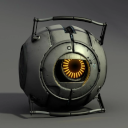In the industrial automation world and most of the IT industry, data is aligned to the nearest word. Depending on architecture, that’s usually either 16, 32, or 64 bits. And that’s the space a single Boolean takes.
That’s why I primarily use booleans in return parameters, beyond that I’ll try to use bitfields. My game engine’s tilemap format uses a 32 bit struct, with 16 bit selecting the tile, 12 bit selecting the palette, and 4 bit used for various bitflags (horizontal and vertical mirroring, X-Y axis invert, and priority bit).
Bit fields are a necessity in low level networking too.
They’re incredibly useful, I wish more people made use of them.
I remember I interned at a startup programming microcontrollers once and created a few bitfields to deal with something. Then the lead engineer went ahead and changed them to masked ints. Because. The most aggravating thing is that an int size isn’t consistent across platforms, so if they were ever to change platforms to a different word length, they’d be fucked as their code was full of platform specific shenanigans like that.
/rant
Good rant.
Yeah. I once had to do stuff to code that had bit-fields like that and after a while, realised (by means of StackOverflow) that that part is UB and I had to go with bitwise operations instead.
Undefined Behavior…?
Ok, I recalled wrong, it was unspecified
I always use stdint.h so that my types are compatible across any mcu. And it makes the data type easily known instead of guessing an i t size
Or you could just use Rust
typedef struct { bool a: 1; bool b: 1; bool c: 1; bool d: 1; bool e: 1; bool f: 1; bool g: 1; bool h: 1; } __attribute__((__packed__)) not_if_you_have_enough_booleans_t;Or just
std::bitset<8>for C++. Bit fields are neat though, it can store weird stuff like a 3 bit integer, packed next to booleansThat’s only for C++, as far as I can tell that struct is valid C
You beat me to it!
This was gonna be my response to OP so I’ll offer an alternative approach instead:
typedef enum flags_e : unsigned char { F_1 = (1 << 0), F_2 = (1 << 1), F_3 = (1 << 2), F_4 = (1 << 3), F_5 = (1 << 4), F_6 = (1 << 5), F_7 = (1 << 6), F_8 = (1 << 7), } Flags; int main(void) { Flags f = F_1 | F_3 | F_5; if (f & F_1 && f & F_3) { // do F_1 and F_3 stuff } }Why not
if (f & (F_1 | F_3)) {? I use this all the time in embedded code.edit: never mind; you’re checking for both flags. I’d probably use
(f & (F_1 | F_3)) == (F_1 | F_3)but that’s not much different than what you wrote.
I set all 8 bits to 1 because I want it to be really true.
01111111 = true
11111111 = negative true = false
00001111 = maybe
10101010 = I don’t know
100001111 = maybe not
0011 1111 = could you repeat the question
00000001 00000000 00001111 10101010
Schrödingers Boolean
Is this quantum computing? 😜
What if it’s an unsigned boolean?

Cthulhu shows up.
Common misconception… Unsigned booleans (ubool) are always 16-bits.
Could also store our bools as floats.
00111111100000000000000000000000is true and10111111100000000000000000000000is negative true.Has the fun twist that true & false is true and true | false is false .
negative true = negative non-zero = non-zero = true.
Why do alternative facts always gotta show up uninvited to the party? 🥳
So all this time true was actually false and false was actually true ?
Depends on if you are on a big endian or little endian architecture.
Come on man, I’m not gonna talk about my endian publicly
You jest, but on some older computers, all ones was the official truth value. Other values may also have been true in certain contexts, but that was the guaranteed one.
TIL, 255 is the new 1.
Aka -1 >> 1 : TRUE
I was programming in assembly for ARM (some cortex chip) and I kid you not the C program we were integrating with required 255, with just 1 it read it as false
Back in the day when it mattered, we did it like
#define BV00 (1 << 0) #define BV01 (1 << 1) #define BV02 (1 << 2) #define BV03 (1 << 3) ...etc #define IS_SET(flag, bit) ((flag) & (bit)) #define SET_BIT(var, bit) ((var) |= (bit)) #define REMOVE_BIT(var, bit) ((var) &= ~(bit)) #define TOGGLE_BIT(var, bit) ((var) ^= (bit)) ....then... #define MY_FIRST_BOOLEAN BV00 SET_BIT(myFlags, MY_FIRST_BOOLEAN)With embedded stuff its still done like that. And if you go from the arduino functionss to writing the registers directly its a hell of a lot faster.
Okay. Gen z programmer here. Can you explain this black magic? I see it all the time in kernel code but I have no idea what it means.
It’s called bitshifting and is used to select which bits you want to modify so you can toggle them individually.
1 << 0 is the flag for the first bit
1 << 1 for the second
1 << 2 for the third and so onI think that’s correct. It’s been years since I’ve used this technique tbh 😅
The code is a set of preprocessor macros to stuff loads of booleans into one int (or similar), in this case named ‘myFlags’. The preprocessor is a simple (some argue too simple) step at the start of compilation that modifies the source code on its way to the real compiler by substituting #defines, prepending #include’d files, etc.
If myFlags is equal to, e.g. 67, that’s 01000011, meaning that BV00, BV01, and BV07 are all TRUE and the others are FALSE.
The first part is just for convenience and readability. BV00 represents the 0th bit, BV01 is the first etc. (1 << 3) means 00000001, bit shifted left three times so it becomes 00001000 (aka 8).
The middle chunk defines macros to make bit operations more human-readable.
SET_BIT(myFlags, MY_FIRST_BOOLEAN)gets turned into((myFlags) |= ((1 << 0))), which could be simplified asmyFlags = myFlags | 00000001. (Ignore the flood of parentheses, they’re there for safety due to the loaded shotgun nature of the preprocessor.)Which part?
Edit - oops, responded to wrong comment…
Depending on the language
And compiler. And hardware architecture. And optimization flags.
As usual, it’s some developer that knows little enough to think the walls they see around enclose the entire world.
Fucking lol at the downvoters haha that second sentence must have rubbed them the wrong way for being too accurate.
deleted by creator
I don’t think so. Apart from dynamically typed languages which need to store the type with the value, it’s always 1 byte, and that doesn’t depend on architecture (excluding ancient or exotic architectures) or optimisation flags.
Which language/architecture/flags would not store a bool in 1 byte?
things that store it as word size for alignment purposes (most common afaik), things that pack multiple books into one byte (normally only things like bool sequences/structs), etc
things that store it as word size for alignment purposes
Nope. bools only need to be naturally aligned, so 1 byte.
If you do
struct SomeBools { bool a; bool b; bool c; bool d; };its 4 bytes.
sure, but if you have a single bool in a stack frame it’s probably going to be more than a byte. on the heap definitely more than a byte
but if you have a single bool in a stack frame it’s probably going to be more than a byte.
Nope. - if you can’t read RISC-V assembly, look at these lines
sb a5,-17(s0) ... sb a5,-18(s0) ... sb a5,-19(s0) ...That is it storing the bools in single bytes. Also I only used RISC-V because I’m way more familiar with it than x86, but it will do the same thing.
on the heap definitely more than a byte
Nope, you can happily
malloc(1)and store a bool in it, ormalloc(4)and store 4 bools in it. A bool is 1 byte. Consider this a TIL moment.c++ guarantees that calls to malloc are aligned https://en.cppreference.com/w/cpp/memory/c/malloc .
you can call
malloc(1)ofc, but callingmalloc_usable_size(malloc(1))is giving me 24, so it at least allocated 24 bytes for my 1, plus any tracking overheadyeah, as I said, in a stack frame. not surprised a compiler packed them into single bytes in the same frame (but I wouldn’t be that surprised the other way either), but the system v abi guarantees at least 4 byte alignment of a stack frame on entering a fn, so if you stored a single bool it’ll get 3+ extra bytes added on the next fn call.
computers align things. you normally don’t have to think about it. Consider this a TIL moment.
Apart from dynamically typed languages which need to store the type with the value
You know that depending on what your code does, the same C that people are talking upthread doesn’t even need to allocate memory to store a variable, right?
How does that work?
I think he’s talking about if a variable only exists in registers. In which case it is the size of a register. But that’s true of everything that gets put in registers. You wouldn’t say
uint16_tis word-sized because at some point it gets put into a word-sized register. That’s dumb.
boolean bloat
I first thought you wrote boolean float, not sure if that’s even worse.
boolean root beer float
deleted by creator
Wait until you hear about alignment
The alignment of the language and the alignment of the coder must be similar on at least one metric, or the coder suffers a penalty to develop for each degree of difference from the language’s alignment. This is penalty stacks for each phase of the project.
So, let’s say that the developer is a lawful good Rust
zealotPaladin, but she’s developing in Python, a language she’s moderately familiar with. Since Python is neutral/good, she suffers a -1 penalty for the first phase, -2 for the second, -3 for the third, etc. This is because Rust (the Paladin’s native language) is lawful, and Python is neutral (one degree of difference from lawful), so she operates at a slight disadvantage. However, they are both “good”, so there’s no further penalty.The same penalty would occur if using C, which is lawful neutral - but the axis of order and chaos matches, and there is one degree of difference on the axis of good and evil.
However, if that same developer were to code in Javascript (chaotic neutral), it would be at a -3 (-6, -9…) disadvantage, due to 2 and 1 degree of difference in alignment, respectively.
Malbolge (chaotic evil), however, would be a -4 (-8, -12) plus an inherent -2 for poor toolchain availability.
…hope this helps. have fun out there!
If JS is chaotic neutral, what then is chaotic evil?
All I’m saying is
"10" + 1 => "101" "10" - 1 => 9 "a" - "b" => NaNfair enough. My personal opinion might be that it’s evil, but perhaps that’s because I expected some kind of order.
Are you telling me that no compiler optimizes this? Why?
It would be slower to read the value if you had to also do bitwise operations to get the value.
But you can also define your own bitfield types to store booleans packed together if you really need to. I would much rather that than have the compiler do it automatically for me.
Well there are containers that store booleans in single bits (e.g.
std::vector<bool>- which was famously a big mistake).But in the general case you don’t want that because it would be slower.
Why is this a big mistake? I’m not a c++ person
The mistake was that they created a type that behaves like an array in every case except for
bool, for which they created a special magical version that behaves just subtly different enough that it can break things in confusing ways.Could you provide an example?
The biggest problem is that each element doesn’t have a unique memory address; iterators aren’t just pointers.
Consider what the disassembly would look like. There’s no fast way to do it.
It’s also unnecessary since 8 bytes is a negligible amount in most cases. Serialization is the only real scenario where it matters. (Edit: and embedded)
In embedded, if you are to the point that you need to optimize the bools to reduce the footprint, you fucked up sizing your mcu.
CPUs don’t read one bit a a time.
They do, that’s the optimisation.
string boolEnable = "True";Violence
Maybe json is named after Jason Voorhees
if wasting a byte or seven matters to you, then then you need to be working in a lower level language.
It’s 7 bits…
Pay attention. 🤪
7 bytes! Look at Mr. Moneybags here!
Well when it comes to bytes, you could say I’m a bit of a millionaire myself.
This reminds me that I actually once made a class to store bools packed in uint8 array to save bytes.
Had forgotten that. I think i have to update the list of top 10 dumbest things i ever did.
Ah, the creator od std::vector<bool>?
Wait till you find out about alignment and padding
Tell me the truth, i can handle it
Wait till you here about every ascii letter. . .
what about them?
ASCII was originally a 7-bit standard. If you type in ASCII on an 8-bit system, every leading bit is always
0.(Edited to specify context)
At least ASCII is forward compatible with UTF-8
Is ascii base-7 fandom’s strongest argument…
Ascii needs seven bits, but is almost always encoded as bytes, so every ascii letter has a throwaway bit.
Let’s store the boolean there then!!
That boolean can indicate if it’s a fancy character, that way all ASCII characters are themselves but if the boolean is set it’s something else. We could take the other symbol from a page of codes to fit the users language.
Or we could let true mean that the character is larger, allowing us to transform all of unicode to a format consisting of 8 bits parts.
Some old software does use 8-Bit ASCII for special/locale specific characters. Also there is this Unicode hack where the last bit is used to determine if the byte is part of a multi-byte sequence.
The 8-bit Intel 8051 family provides a dedicated bit-addressable memory space (addresses 20h-2Fh in internal RAM), giving 128 directly addressable bits. Used them for years. I’d imagine many microcontrollers have bit-width variables.
bit myFlag = 0;Or even return from a function:
bit isValidInput(unsigned char input) { // Returns true (1) if input is valid, false (0) otherwise return (input >= '0' && input <= '9'); }Nothing like that in ARM. Even microcontrollers have enough RAM that nobody cares, I guess.
ARM has bit-banding specifically for this. I think it’s limited to M-profile CPUs (e.g. v7-M) but I’ve definitely used this before. It basically creates a 4-byte virtual address for every bit in a region. So the CPU itself can’t “address” a bit but it can access an address backed by only 1 bit of SRAM or registers (this is also useful to atomically access certain bits in registers without needing to use SW atomics).
Tell this to the LPC1114 I’m working with. Did you ever run a multilingual GUI from 2kbytes RAM on a 256x32 pixel display?
I did a multilingual display with an 8031 in 1995 on a 2x16 text LCD. I had 128 bytes of RAM and an EPROM. Did English, Spanish and German.
You kids have it so easy nowadays. 🤣
Last counting was 114 languages on the LPC1114. And yes, with normal LCDs I’ve done similar things on an 8051 before.
We could go the other way as well: TI’s C2000 microcontroller architecture has no way to access a single byte, let alone a bit. A Boolean is stored in 16-bits on that one.
Then you need to ask yourself: Performance or memory efficiency? Is it worth the extra cycles and instructions to put 8 bools in one byte and & 0x bitmask the relevant one?
A lot of times using less memory is actually better for performance because the main bottleneck is memory bandwidth or latency.
Yep, and anding with a bit ask is incredibly fast to process, so it’s not a big issue for performance.
It’s not just less memory though - it might also introduce spurious data dependencies, e.g. to store a bit you now need to also read the old value of the byte that it’s in.
It might also introduce spurious data dependencies
Those need to be in the in smallest cache or a register anyway. If they are in registers, a modern, instruction reordering CPU will deal with that fine.
to store a bit you now need to also read the old value of the byte that it’s in.
Many architectures read the cache line on write-miss.
The only cases I can see, where byte sized bools seems better, are either using so few that all fit in one chache line anyways (in which case the performance will be great either way) or if you are repeatedly accessing a bitvector from multiple threads, in which case you should make sure that’s actually what you want to be doing.
Could definitely be worse for latency in particular cases, but if we imagine a write heavy workload it still might win. Writing a byte/word basically has to do the same thing: read, modify write of cache lines, it just doesn’t confuse the dependency tracking quite as much. So rather than stalling on a read, I think that would end up stalling on store buffers. Writing to bits usually means less memory, and thus less memory to read in that read-modify-write part, so it might still be faster.
And you may ask yourself: where is my beautiful house? Where is my beautiful wife?
Letting the days go by, let the water hold me down
- Soon to be
- That’s me
Talking heads - once in a lifetime
Sounds like a compiler problem to me. :p



















